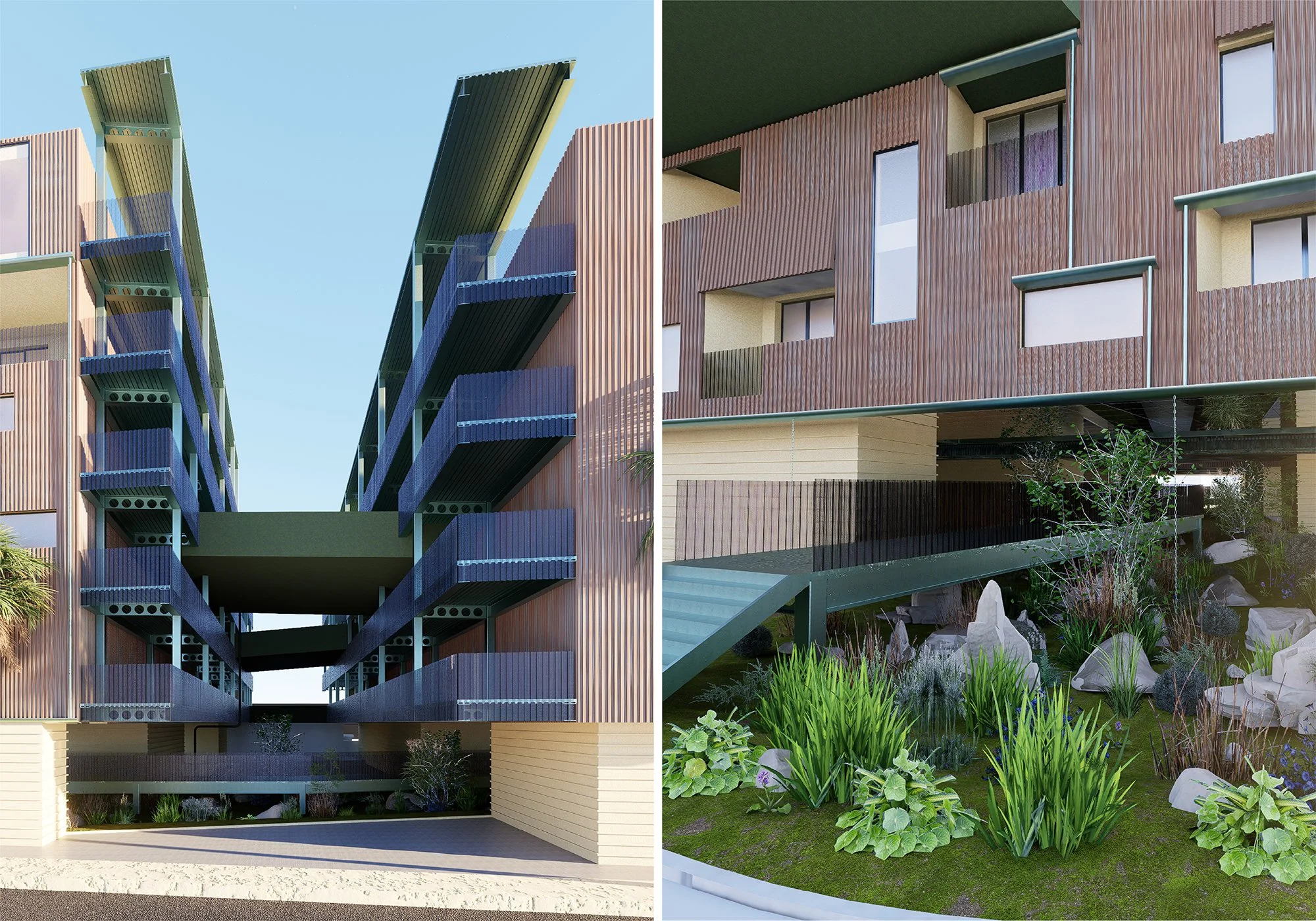Byron H. Roberts
You are living in a world where buildings and your relationship with them are weighing heavily on the planet. As you navigate the reality of climate change, consider how your actions would shift if you were deeply aware of its direct impact on you—right here, right now. As you exist within this vast, interconnected system called Earth, how should you act to create a better way of life—financially, socially, and environmentally? The built environment contributes 42% of annual global CO2 emissions. According to the article Decarbonizing the U.S. Economy by 2050, "The Blueprint aims to reduce greenhouse gas emissions from U.S. buildings 65% by 2035 and 90% by 2050."
To help achieve this goal, this thesis explores how you can create an ecosystem that functions as a micro city by integrating environmental systems related to site, water, and energy. By incorporating passive design strategies, you can enhance building performance on a larger scale, drastically reduce embodied carbon, and establish a low-carbon footprint.
The environment is dynamic and constantly evolving, and architecture must adapt to this reality. By studying biomimetic design—architecture inspired by nature—you can better understand how structures respond to their surroundings. The Honeycomb Worm reef, for example, offers a model for woven structures that shelter inhabitants efficiently and sustainably.
Crenshaw Crossing is a vital intersection for commuters traveling through Los Angeles. By developing a small city in this location, you can create a hub that improves the financial and social well-being of its residents while setting a precedent for passive and environmental building techniques. This project serves as a step toward the greater goal of reducing greenhouse gas emissions and working toward a more sustainable future by 2050.
Exterior Render
Perspective Section
Circulation
Enlarged Floor Plan



